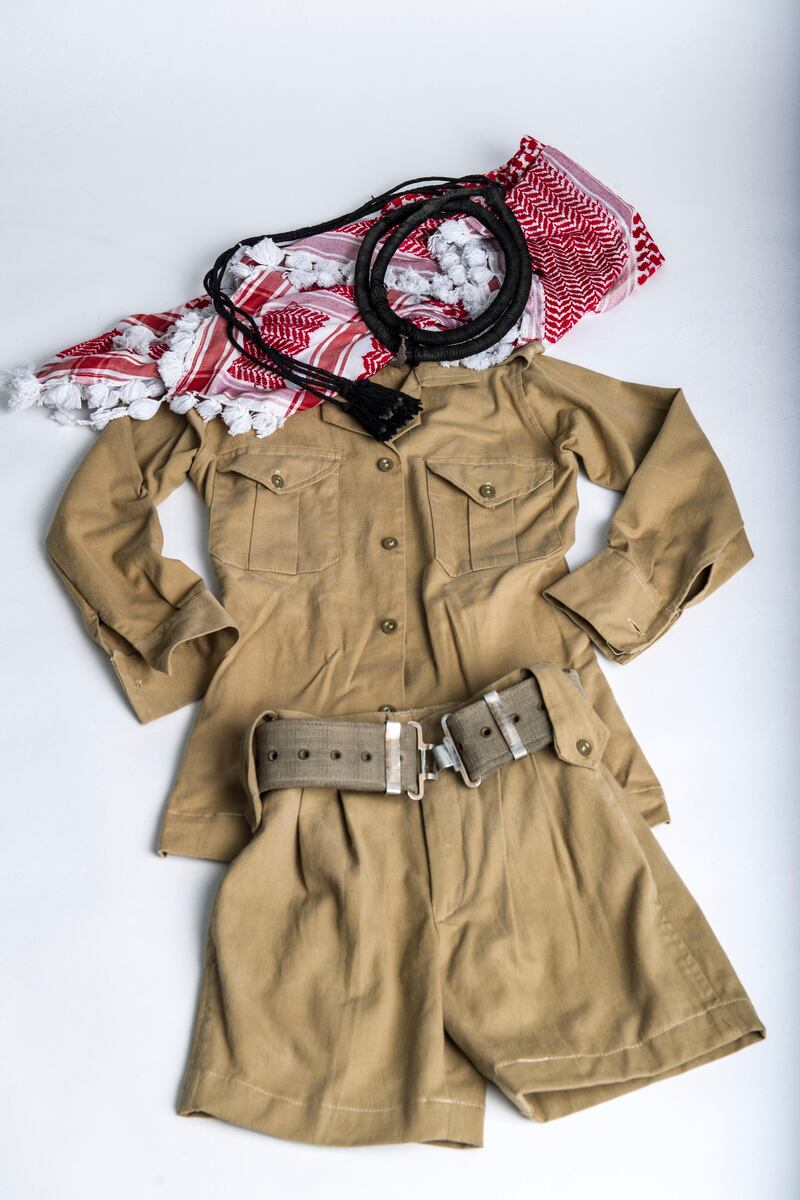If you look closely at the Dh50 note, you can see the door to what once was the bedroom of a Trucial Oman Scouts officer. That building is Al Jahili Fort and the officer is David Neild, who lived in the tower pictured on the note back in the 1950s when he was an officer.
"So many memories," Neild says of his time spent in Al Ain.
“It’s very special. My 21st birthday was here. There was a breeze and we had a fantastic view of the desert with Jebel Hafeet in the background.”
Neild, along with other former members of the Trucial Oman Scouts, returned to Al Ain on Wednesday. They were in the Garden City for the launch of an exhibition showcasing the history of the military force that was established to ensure stability in the Trucial States during a time of change and tumult.
He was the youngest British officer ever to serve with the scouts. Neild joined at the age of 20 and describes the experience of arriving in Sharjah in 1959 as inducing a state of shock.
“I knew it was remote and very poor, just barasti [huts] made of date palm. But nothing could really describe that feeling when you got off that plane in the heat in Sharjah,” he recalls. “But it was the same for everyone. It wasn’t as if there were some people in lovely villas with air-conditioning. You couldn’t sleep. If you slept for an hour, that would be about it.”
The Trucial Oman Levies were founded in 1951 by the British Crown. They were headquartered in Sharjah and in 1955 established a base at Al Jahili. Other bases existed at Mirfa and Masafi. By 1956, they had been renamed the Trucial Oman Scouts and had grown to 688 personnel of different ranks.
The force was under British command, soldiers were recruited locally and a number of other officers came from Arab countries. It was the forerunner of the Armed Forces.
What Neild and his colleagues achieved and went through from 1951 to 1971 can be seen in the exhibition in which weapons, uniforms, flags, medical kit and radios are on display.
But the small exhibition also focuses upon the social and humanitarian role played by the scouts at a time when educational and medical facilities were few. For example, a local school was established at the headquarters in Sharjah. Maths, Arabic, geography were taught and Morse Code training was also offered. Many of the boys who attended went on to form the backbone of the Armed Forces.
“In those days there were hardly any schools. Very few spoke English. The scouts brought some [formal] education, not anything like enough. But it was a start,” Neild says.
There was no medical clinic at Al Jahili Fort, but camel patrols brought first aid, basic medicine and items such as disinfectants to remote villages around Al Ain. What was also important was how the scouts helped to ensure vital water supplies.
Al Ain did have an advanced irrigation network, but in an arid desert environment, the scouts helped to dig wells and transport water. The scouts also conducted search-and-rescue missions for pilgrims lost on their way to Mecca. A military band was formed in 1957 that provided a musical backdrop to official functions – a bugle and bagpipes can be seen at Al Jahili.
“The military [side] was important, but it was more than that. This social work was vital,” Neild says.
The exhibition opened with a public discussion between retired Major General Sheikh Faisal bin Sultan bin Salem Al Qassimi and Major General Abdullah Ali Al Kaabi.
Both served with the Trucial Oman Scouts before serving in the Armed Forces. Also present was Lieutenant Colonel Tim Courtenay, who served with the scouts in the 1960s. For Lt Col Courtenay, the humanitarian work the scouts did from medicine to school was vital. It represented a sort of hearts-and-minds campaign that inculcated a level of trust and respect between all sides.
When the UAE was formed on December 2, 1971, the scouts were renamed the Union Defence Force, which later became the Armed Forces. Neild would go on to establish defence forces for Ras Al Khaimah and Sharjah, while Lt Col Courtenay left the region in 1970 for further service with British military.
“This exhibition is but a grain of sand compared with all the information, all the equipment, all the photographs that we have gathered,” Lt Col Courtenay says. “We now have to grow what is here into a big central history of the levies and the scouts.”
There are now only about 80 of the British scouts remaining. But their legacy lives on.
“I’ve always described the force as [like a] UN force,” Neild says. “We were trying to keep the peace and be neutral. In 20 years, we managed to create sufficient stability for the birth of the UAE which was vital.”
The Trucial Scouts: Life and Times runs at Al Jahili Fort in Al Ain until April 28, run in co-operation with the Department of Culture and Tourism – Abu Dhabi
__________________
Read more:
[ New memoir from British soldier on the friendships and personalities of the Arabian Gulf ]
[ Trucial scouts retrace their prints ]
[ A force armed with skill and tact ]
__________________






